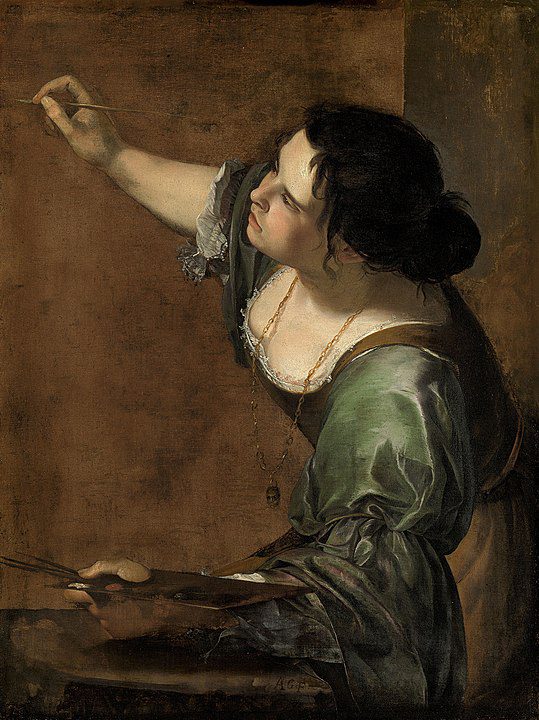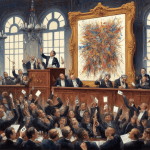
The art world has long faced criticism over its gender imbalance, particularly in exhibitions. Some argue that male artists dominate art exhibitions to an unfair degree. However, there are historical, cultural, and economic reasons why this imbalance exists. Understanding these reasons helps explain why the gender imbalance in art exhibitions is not only prevalent but, in many ways, justified.
Historical Context of Gender Imbalance in Art
Art history is filled with the names of male artists who have become household names. Leonardo da Vinci, Michelangelo, and Vincent van Gogh are just a few examples. The dominance of male artists is not accidental; it reflects the societal norms and expectations of their times. Historically, men had more access to education and opportunities in the arts. This advantage allowed them to refine their skills and create works that would be celebrated for centuries.
Women, on the other hand, were often restricted to domestic roles. They were expected to focus on family and household duties, leaving little time or opportunity to pursue art. Even when women did create art, their work was often undervalued or ignored. For instance, Artemisia Gentileschi, a talented female artist from the Baroque period, faced numerous obstacles because of her gender. Despite her skill, she was overshadowed by her male counterparts.
The formation of the art canon further solidified the dominance of male artists. The canon is a collection of works deemed essential and influential in art history. It was largely established by male scholars and critics who favored the works of male artists. As a result, the art history that we study today is heavily skewed towards men. This long-lasting influence has ensured that male artists continue to dominate art exhibitions.
Moreover, the role of patrons and art institutions cannot be overlooked. Historically, wealthy patrons who supported artists were often men. They commissioned works from male artists, further boosting their careers. Art institutions, run predominantly by men, also played a role in perpetuating this gender imbalance. They organized exhibitions and promoted the works of male artists, leaving little room for women to gain recognition.
Cultural and Societal Influences
Cultural expectations have significantly shaped artistic expression, often favoring male artists. Traditionally, male artists were encouraged to explore bold, innovative themes. These themes often aligned with societal values, making their work more popular and widely accepted. In contrast, female artists were often expected to focus on “feminine” subjects, such as domestic life and portraits. This cultural bias limited the scope of their work and reduced its perceived value.
Media and popular culture have also played a role in reinforcing gender imbalances in art. Art exhibitions featuring male artists receive more media coverage, further boosting their visibility. This increased visibility leads to greater recognition and more exhibition opportunities. Popular culture, too, tends to celebrate male artists more frequently. Films, documentaries, and books often focus on the lives of male artists, reinforcing their dominance in the art world.
Market demands also justify the gender imbalance in art exhibitions. The art market is driven by trends and the preferences of collectors. Male artists, having dominated art history, are often seen as safer investments. Collectors are more likely to purchase works by male artists, as these works are perceived to have higher market value. This market-driven demand ensures that male artists are more frequently featured in exhibitions.
Furthermore, the preferences of collectors and buyers influence the selection of artists for exhibitions. Collectors often have established relationships with male artists or their representatives. These relationships can lead to more exhibition opportunities for male artists. Galleries and museums, in turn, cater to these preferences, further perpetuating the gender imbalance in art exhibitions.
Economic Considerations in Art Exhibitions
The financial viability of art exhibitions is a crucial factor that influences the selection of artists. Exhibitions are expensive to organize and maintain, and galleries and museums must ensure they are profitable. Male artists, with their established reputations and market value, are often seen as safer choices. Their works are more likely to attract visitors, generate sales, and ensure the financial success of an exhibition.
Art institutions also have to manage financial risks. Organizing an exhibition is a significant investment, and institutions want to minimize the risk of failure. Choosing male artists, who have a proven track record of success, is a way to manage this risk. Male artists are more likely to draw crowds, attract media attention, and sell tickets, all of which contribute to the financial success of an exhibition.
The concept of return on investment (ROI) is another economic consideration. Art institutions and collectors view male artists as providing a better ROI due to their established market value. Works by male artists are often more expensive and more likely to appreciate in value over time. This perception of higher ROI makes male artists more attractive to collectors and institutions, further justifying their dominance in art exhibitions.
Market value disparities between male and female artists also play a significant role in exhibition choices. The market value of a work of art is often influenced by the artist’s gender. Male artists typically have higher market values, which makes their works more desirable for exhibitions. This disparity is not necessarily a reflection of talent but rather a result of historical and cultural biases. However, it continues to influence the selection of artists for exhibitions, contributing to the gender imbalance.
Counterarguments and Rebuttals
Critics of the gender imbalance in art exhibitions often argue that it is unfair and discriminatory. They believe that all artists, regardless of gender, should have equal opportunities to showcase their work. While this argument has merit, it overlooks the historical, cultural, and economic factors that have shaped the art world. These factors justify the current gender imbalance in art exhibitions.
One of the main criticisms is that the gender imbalance perpetuates inequality and limits opportunities for female artists. However, it is important to recognize that the art world is gradually changing. The growing presence of female artists in galleries and exhibitions is a sign of progress. While the imbalance still exists, it is being addressed in ways that acknowledge the historical context.
Emerging female artists are increasingly gaining visibility and recognition. Art institutions are beginning to prioritize gender diversity in their exhibitions, providing more opportunities for female artists. This shift is a positive development, but it does not negate the reasons why male artists have historically dominated exhibitions. The historical, cultural, and economic factors that have justified this dominance are still relevant today.
In the long term, the art world may see a more balanced representation of male and female artists. However, this change will take time and cannot be forced. It must occur organically, with respect for the historical context and the evolution of cultural and market trends. In the meantime, the gender imbalance in art exhibitions remains justified based on the factors discussed.
Case Studies
To further understand the gender imbalance in art exhibitions, it is helpful to examine specific examples. Major art exhibitions often feature a disproportionate number of male artists. For instance, the Venice Biennale, one of the most prestigious art exhibitions in the world, has historically showcased more male than female artists. The organizers argue that this imbalance reflects the reality of the art world and the market demand for works by male artists.
Another example is the dominance of male artists in auction houses. Auction houses such as Sotheby’s and Christie’s often feature works by male artists, which sell for higher prices compared to those by female artists. This trend further reinforces the gender imbalance in art exhibitions, as galleries and museums often select artists whose works have proven market value.
Despite these imbalances, there are notable exceptions where female artists have achieved significant recognition. For example, Yayoi Kusama, a Japanese female artist, has gained international fame for her unique and innovative works. Kusama’s exhibitions have attracted millions of visitors worldwide, demonstrating that female artists can achieve success in the art world. However, Kusama’s success is the exception rather than the rule, highlighting the ongoing challenges faced by female artists.
It is also important to note that some art institutions are actively working to address the gender imbalance. The National Museum of Women in the Arts, for example, is dedicated to showcasing the works of female artists. While these efforts are commendable, they do not negate the historical and economic factors that have justified the dominance of male artists in art exhibitions.
Conclusion
The gender imbalance in art exhibitions is a complex issue with deep historical, cultural, and economic roots. While it is easy to criticize the imbalance as unfair, it is important to understand the factors that have contributed to it. Male artists have dominated art history, the art market, and cultural representation for centuries. This dominance is reflected in the exhibitions we see today.
However, the art world is evolving. Female artists are gaining more recognition and opportunities, and institutions are beginning to prioritize gender diversity. This progress is encouraging, but it must be balanced with respect for the historical context. The gender imbalance in art exhibitions may not be ideal, but it is justified based on the factors discussed in this article.
As Pablo Picasso once said, “The purpose of art is washing the dust of daily life off our souls.” This quote reminds us that art transcends gender and should be appreciated for its ability to inspire and uplift. While the gender imbalance in art exhibitions is a reality, it does not diminish the value of art created by both men and women.




